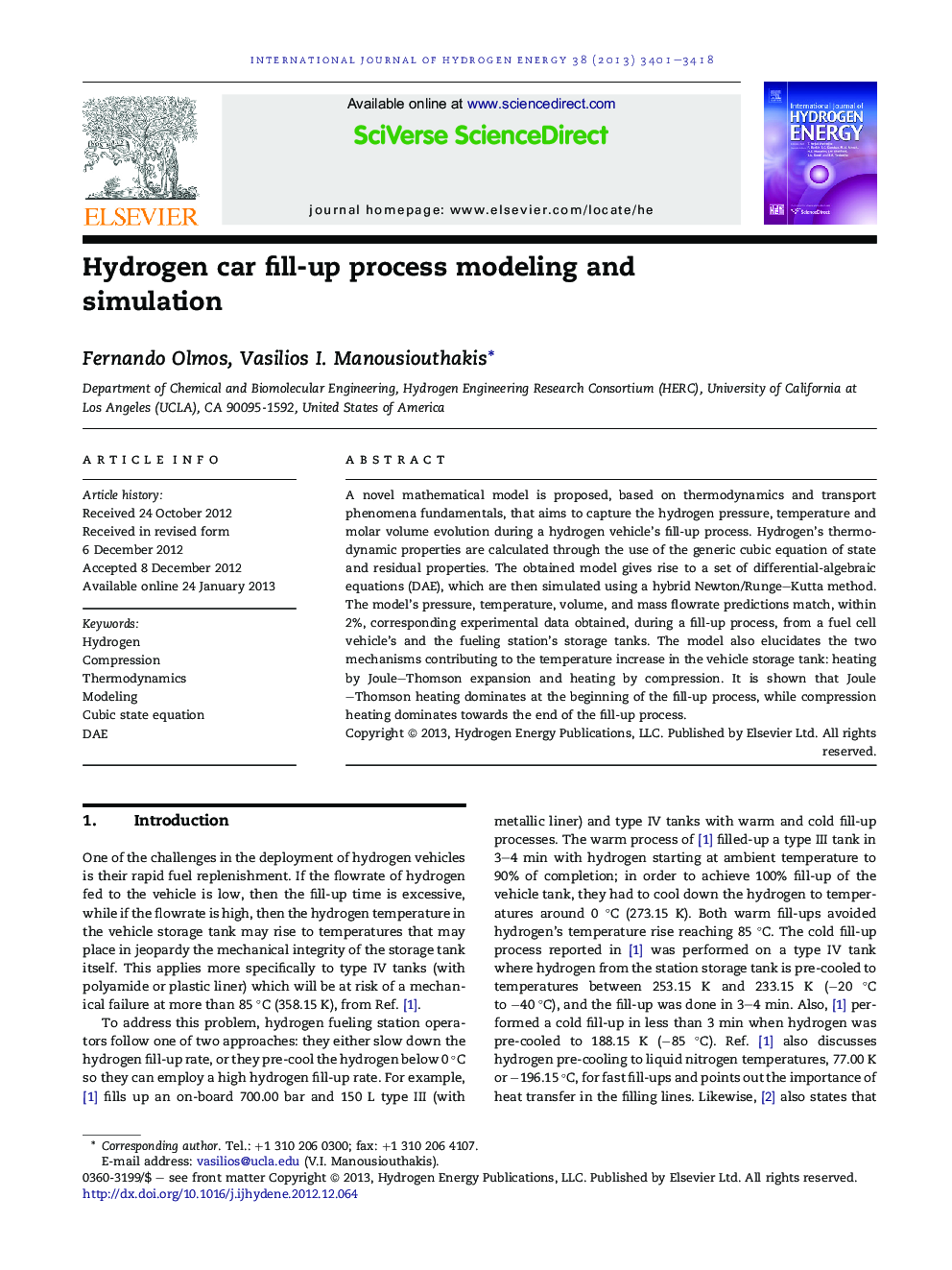| Article ID | Journal | Published Year | Pages | File Type |
|---|---|---|---|---|
| 1275759 | International Journal of Hydrogen Energy | 2013 | 18 Pages |
A novel mathematical model is proposed, based on thermodynamics and transport phenomena fundamentals, that aims to capture the hydrogen pressure, temperature and molar volume evolution during a hydrogen vehicle’s fill-up process. Hydrogen’s thermodynamic properties are calculated through the use of the generic cubic equation of state and residual properties. The obtained model gives rise to a set of differential-algebraic equations (DAE), which are then simulated using a hybrid Newton/Runge–Kutta method. The model’s pressure, temperature, volume, and mass flowrate predictions match, within 2%, corresponding experimental data obtained, during a fill-up process, from a fuel cell vehicle’s and the fueling station’s storage tanks. The model also elucidates the two mechanisms contributing to the temperature increase in the vehicle storage tank: heating by Joule–Thomson expansion and heating by compression. It is shown that Joule–Thomson heating dominates at the beginning of the fill-up process, while compression heating dominates towards the end of the fill-up process.
► A novel self-consistent thermodynamic model for hydrogen is presented. ► Hydrogen fill-up is modeled using mass/energy conservation and equations of state. ► Resulting DAE system is solved by a hybrid 4th order Runge–Kutta/Newton algorithm. ► Model predictions match experimental data within a maximum difference of 2%. ► Hydrogen heating is first dominated by Joule–Thomson, and then by compression.
